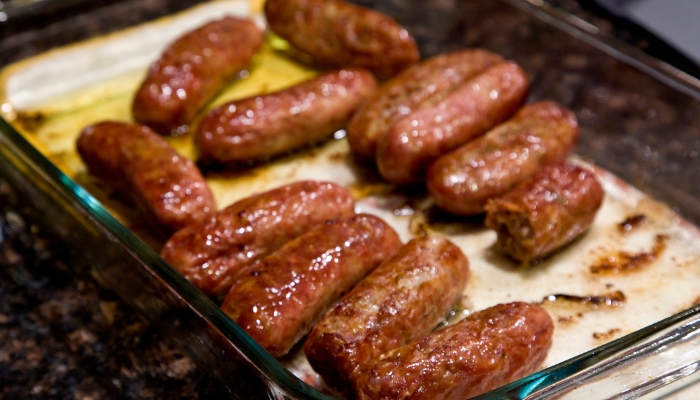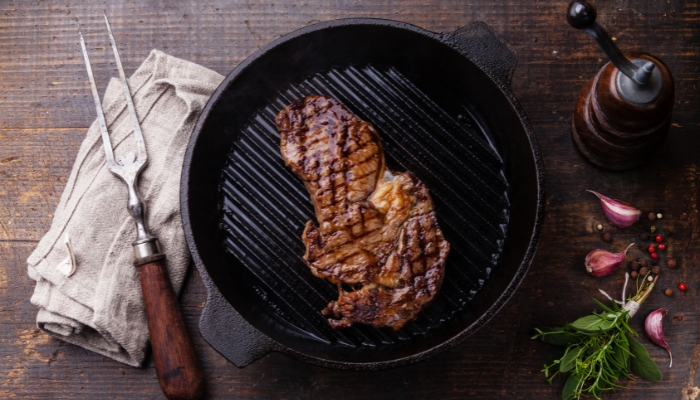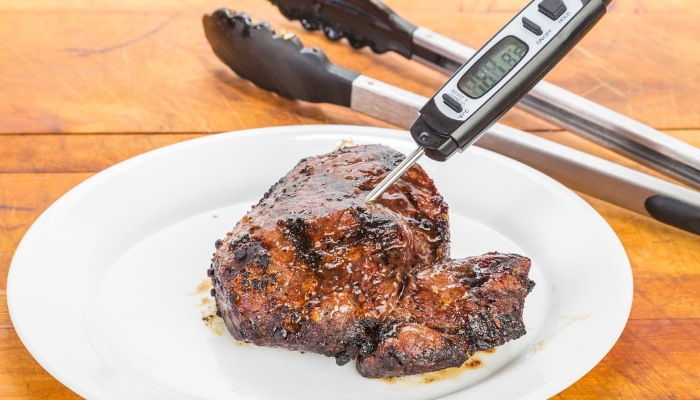Ah, the sweet, smoky aroma of BBQ — it's a hallmark of summer. But what if you're craving that grilled goodness and don't have a grill? No worries! You can still enjoy BBQ flavors right in your kitchen.
With the right techniques and handy tools, you can transform your stovetop, oven, or microwave into a BBQ station full of yummy eats. But how can you bring the BBQ magic indoors? We'll show you!
Grilling on a Stovetop

Your stovetop can double as a grill with the right tool — like a grill pan, your secret weapon for stovetop grilling! These pans have ridges that mimic the grates on a grill, giving your food those classic sear lines. Plus, they're great at draining away excess fat, making your meal healthier.
If you don't have a grill pan, a cast iron skillet can also do the trick. Its excellent heat retention makes it ideal for achieving that grilled texture. Just remember to heat the skillet well before adding your food, balance the heat to create grill marks and ensure even cooking, and avoid overcrowding the skillet to prevent your food from steaming instead of grilling.
Pro Tip: Make sure to follow the same techniques for your grill pan as your cast iron skillet!
Grilling in an Oven and Using the Broiler

Your oven is a versatile tool for indoor BBQ. Not only can it mimic the direct and indirect heat zones of a grill, but it also houses a secret weapon: the broiler. So, to use your oven effectively, try the following tips:
- Preheat Your Pan: If you have a grill pan, preheat it in the oven before adding your food. This can help sear the outside and create grill marks.
- Flip Your Food: Turn your food halfway through the cooking time to cook it evenly and create grill marks on both sides.
- Use the Broiler: The broiler provides intense, direct heat like a grill. Position your oven rack so the food will be a few inches from the broiler, and keep a close eye on your food to prevent burning.
- Use Oven-Safe Grill Accessories: If your oven comes with grill-like attachments or accessories, they can be a great way to get a grilled effect.
Grilling in a Microwave
Surprisingly, your microwave can step up to the plate for some grilling action. While it won't give you sear marks, it can still cook food quickly and efficiently. Some newer microwaves have a grill function, which uses the heating element to provide heat from the top and brown the food.
But for microwaves without this function, you can still use microwave-safe grill pans to drain away fat and provide that grilled texture. And don't forget to monitor the cooking times so you don't end up with a tough, shrunken hunk of meat!
Grill Marks without the Grill

Who doesn't love those beautiful grill marks on grilled meat or veggies? They're like the signature of a great BBQ. But can you get them without a grill? Absolutely!
- Use a Grill Pan or Skillet: These pans have ridges that can create grill marks on your food. Just make sure it's nice and hot before you add your food.
- Try a Hot Skewer: A little unconventional, but you can heat a metal skewer over your stovetop flame and then press it onto your food to create grill marks.
- Experiment with a Ridged Pan: A ridged pan can also create those coveted grill marks if you don't have a grill pan.
- Get Creative with a Griddle: If you have a griddle, heat it up and use a metal spatula or tongs to press your food onto the hot surface. This can create a seared effect similar to grill marks.
Flavor Enhancements
You might think these techniques miss out on one objective: achieving that smoky, grilled flavor! But don't worry; indoor grilling is all about the seasonings!
- Smoking Seasonings: Ingredients like smoked paprika, chipotle powder, or smoked salt can add a smoky flavor to your food.
- Liquid Smoke: A few drops of liquid smoke can go a long way in giving your food a grilled taste.
- Marinades: A good marinade can infuse your food with flavor. Try a marinade with ingredients like brown sugar, vinegar, and smoky seasonings for a BBQ taste.
Don't be afraid to experiment until you find that right smoky balance you crave!
Additional Tips for Indoor Grilling

Mastering indoor grilling takes a bit of practice, but these extra tips can help you get there:
- Invest in a Meat Thermometer: This handy tool ensures your meat is cooked to the perfect temperature, taking the guesswork out of grilling.
- Let it Rest: After grilling, let your meat rest for a few minutes before cutting into it. This allows the juices to redistribute, resulting in a more flavorful bite.
- Clean Your Tools: Leftover residue can smoke and affect the flavor of your food, so you should always keep your grilling tools clean.
- Ventilation is Key: Indoor grilling can create smoke, so make sure your kitchen is well-ventilated to keep the air clear.
With these tips, you're all set to conquer the world of indoor BBQ — grill or no grill!
BBQ Every Day!
As you can see, indoor grilling isn't a big challenge — you just need the right tools and techniques! But if your kitchen appliances aren't doing the grill job right, it might be time to find your upgrade at Acceptance Appliance Centers. We have various top-brand name cooking appliances and cooking types to suit every culinary need.
Ready to take your indoor BBQ game to the next level? Call us or stop by today, and let's make every meal a BBQ feast!